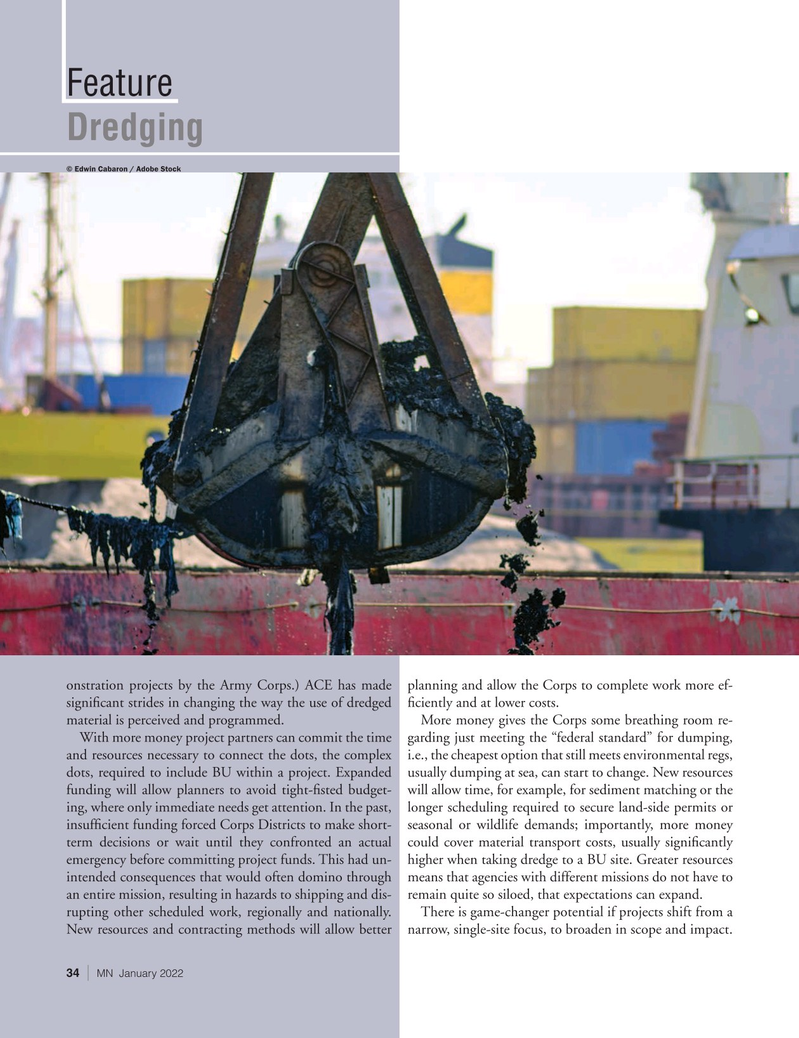
Page 34: of Marine News Magazine (January 2022)
Workboat Propulsion
Read this page in Pdf, Flash or Html5 edition of January 2022 Marine News Magazine
Feature
Dredging © Edwin Cabaron / Adobe Stock onstration projects by the Army Corps.) ACE has made planning and allow the Corps to complete work more ef- signi? cant strides in changing the way the use of dredged ? ciently and at lower costs.
material is perceived and programmed. More money gives the Corps some breathing room re-
With more money project partners can commit the time garding just meeting the “federal standard” for dumping, and resources necessary to connect the dots, the complex i.e., the cheapest option that still meets environmental regs, dots, required to include BU within a project. Expanded usually dumping at sea, can start to change. New resources funding will allow planners to avoid tight-? sted budget- will allow time, for example, for sediment matching or the ing, where only immediate needs get attention. In the past, longer scheduling required to secure land-side permits or insuf? cient funding forced Corps Districts to make short- seasonal or wildlife demands; importantly, more money term decisions or wait until they confronted an actual could cover material transport costs, usually signi? cantly emergency before committing project funds. This had un- higher when taking dredge to a BU site. Greater resources intended consequences that would often domino through means that agencies with different missions do not have to an entire mission, resulting in hazards to shipping and dis- remain quite so siloed, that expectations can expand.
rupting other scheduled work, regionally and nationally. There is game-changer potential if projects shift from a
New resources and contracting methods will allow better narrow, single-site focus, to broaden in scope and impact. 34 | MN January 2022

 33
33

 35
35
